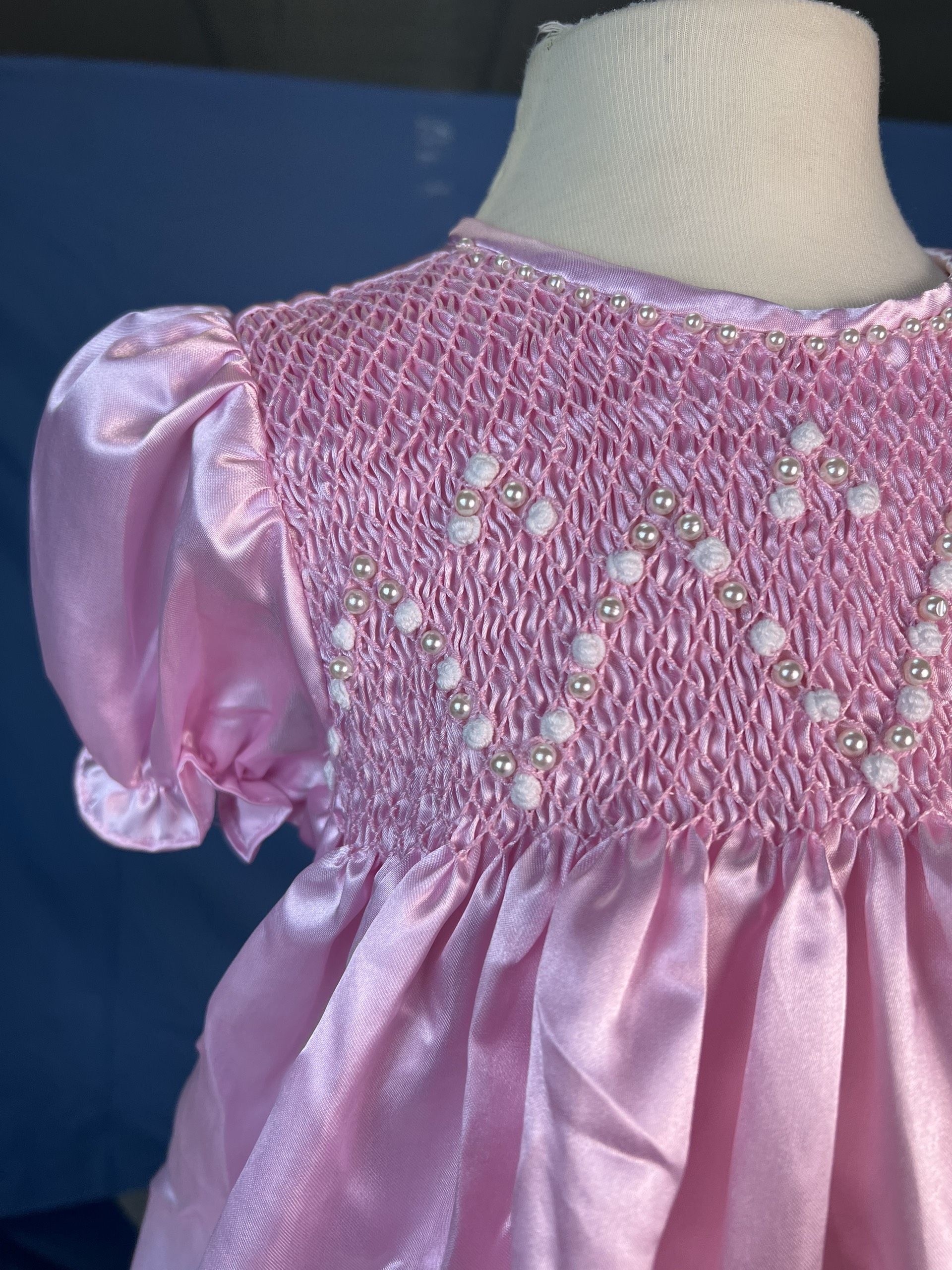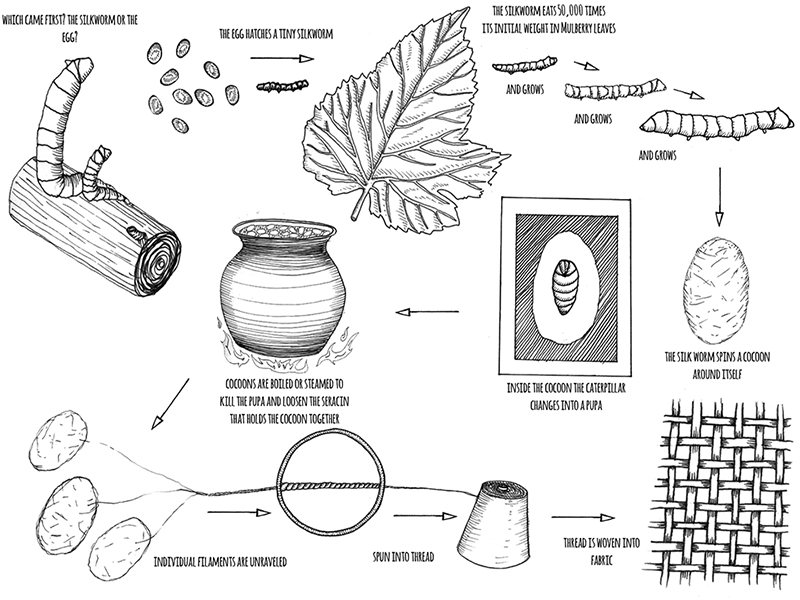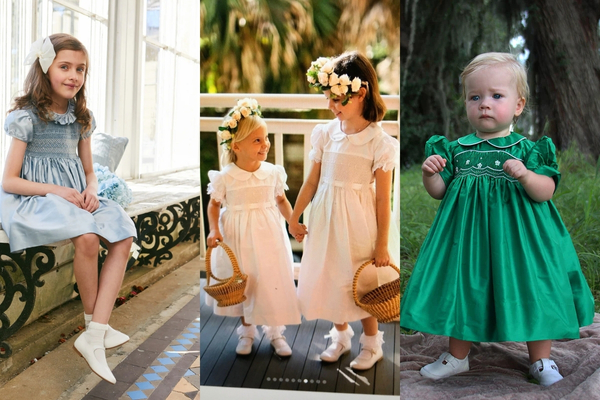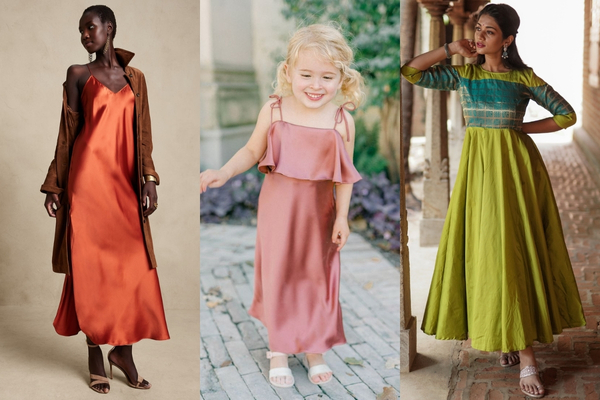What Is Silk Fabric And Why Is It So Popular In Clothing?
Despite silk accounting for a small percentage of the global textile market, less than 0.2%, its production facilities span over 60 countries worldwide. The reason why silk, despite its beauty, has such a small market share is due to its lengthy production process.
For example, it takes approximately 2,500 to 3,000 cocoons just to produce a pound (0.45 kg) of silk, which can be used to create a silk scarf measuring about 45 x 170 cm (18 x 67 inches).
Because of its rarity, silk is highly sought after by buyers worldwide. So, what makes this fabric so special? Let’s explore everything about silk fabric in the following article.
What is Silk?
Silk fabric is composed of natural protein fibers called fibroin, produced by silkworms.

The special feature of silk fabric is the quality of the silk thread. Silk fabric with silk fibers is very soft, smooth and has a natural sparkling beauty. Additionally, these fibers are extremely fine and have a unique triangular structure, giving silk its characteristic smoothness and durability.
That is the reason why silk fabric becomes one of the most luxurious and expensive fabrics in the world, attracting the attention of many people and is widely used in the high-end fashion industry.
Origin of Silk Fabric
Silk fabric has a fascinating origin dating back about 5,000 years ago in ancient China. It all started with tiny creatures called silkworms. These silkworms weave cocoons made of a special fiber called silk. It was discovered that this silk thread could be carefully unraveled and woven into a beautiful fabric.
The process of creating silk fabric began as a closely guarded secret in China. The Chinese kept it a mystery for a long time, allowing them a monopoly on silk production. However, eventually, the secret was out and the art of silk making spread to other parts of the world.
Silk became highly prized and valued for its luxurious feel and shimmering appearance. It is considered a symbol of wealth and status. Over time, different cultures began to develop their own methods of producing silk fabric. Today, silk is produced not only in China but also in many other countries, including Vietnam, India, Thailand and Brazil.
The journey of silk, from the humble silkworm to the splendid fabric, is a testament to human curiosity and ingenuity. It continues to captivate people with its beauty and remains one of the most loved fabrics in the world.
How Is Silk Fabric Made?
The process of silk fabric production typically involves the following main steps:
- Step 1. Silkworm cultivation: The production process starts with raising silkworms. Silkworms are taken care of and nurtured in an environment where they build cocoons and produce silk threads.

- Step 2. Harvesting silk threads: Once the silkworms have built their cocoons and produced silk threads inside them, all the silk threads are carefully collected. Skilled craftsmanship and delicate techniques are required to avoid damaging the valuable silk threads.
- Step 3. Processing silk threads: The harvested silk threads are processed to remove impurities and make them clean. This process includes steps like heating, soaking in water, and reeling the silk threads into long and soft fibers.
- Step 4. Spinning silk fibers into silk yarn: The long silk fibers are spun into silk yarn with a smaller diameter that is suitable for the desired texture of the final silk fabric.
- Step 5. Weaving the fabric: The spun silk yarn is woven into silk fabric using weaving machines.
- Step 6. Treating and finishing the silk fabric: After weaving, the silk fabric undergoes treatments to make it soft and enhance its durability. These treatments include dyeing, steaming to soften the fabric, and ironing to create a smooth and visually appealing surface for the silk fabric.
Popular Types of Silk Fabrics
There are several types of silk fabric, each with its own unique characteristics and uses. Here are some common types of silk fabric and their purposes:
- Mulberry Silk: Mulberry silk is the most widely produced and popular type of silk. It is known for its fine texture, lustrous appearance, and excellent draping qualities. Mulberry silk is commonly used for high-quality clothing, such as dresses, blouses, and scarves.
We did try many fabrics for our products but this one is different and our customers loved it. So we decided to use this Mulberry Silk, along with cotton and linen for our smocked children’s clothes.
If you want to feel the softness and smoothness of this fabric, take a tour to our garment factories in Vietnam. Before that, you can contact our Sales team at WhatsApp: +84 85 555 5961 for a tour and more information about our products.

- Charmeuse Silk: Charmeuse silk is a lightweight and glossy fabric with a satin weave on one side and a matte finish on the other. It has a luxurious drape and is often used for evening gowns, lingerie, and flowing blouses.
- Habotai Silk: Habotai silk, also known as “China silk,” is a lightweight and smooth fabric with a subtle sheen. It is commonly used for linings, lightweight garments like blouses and dresses, as well as for silk painting and other craft projects.
- Dupioni Silk: Dupioni silk is characterized by its slubbed texture, which is created by irregular silk threads. It has a crisp and slightly rough feel and is often used for formal wear, bridal gowns, and home decor items like curtains and upholstery.
- Organza Silk: Organza silk is a sheer and lightweight fabric with a stiff texture. It is commonly used for making bridal gowns, evening wear, and decorative items like ribbons, bows, and tablecloths
- Tussah Silk: Tussah silk, also known as “wild silk,” is produced from the cocoons of wild silkworms. It has a coarser texture and a natural golden hue. Tussah silk is often used for rustic or textured garments, as well as for upholstery and drapery fabrics.
- Crepe de Chine: Crepe de Chine is a lightweight and slightly textured silk fabric with a subtle crinkled appearance. It has a soft drape and is often used for blouses, dresses, and flowy skirts.
Why is Silk So Popular in Clothing?
So, what are the characteristics of silk that everybody, including garment manufacturers and suppliers, love so much?
- Soft and smooth texture: Silk feels incredibly soft and smooth against the skin, providing a luxurious and comfortable wearing experience.
- Natural shimmer and luster: Silk has a beautiful sheen that adds an elegant touch to garments, making them visually appealing.
- Breathable and cool: Silk helps regulate body temperature, keeping you cool in hot weather and providing warmth in colder temperatures.
- Durability and strength: Despite its delicate appearance, silk fibers are surprisingly strong, ensuring that silk clothing can last a long time with proper care.
- Versatility: Silk is a versatile fabric that can be easily dyed and tailored into various styles, offering endless possibilities in fashion, that’s why it is loved by all manufacturers in the world.
- Rarity: Because silk threads are difficult and take a long time to make, they are very rare. And the rarer it is, the more people want to pursue it.

Drawbacks of Silk
While silk is highly regarded for its many desirable qualities, it does have some drawbacks to consider:
- Price: Silk can be expensive due to its rarity, meaning silk clothing can be more expensive than other fabrics like cotton or linen.
- Special care requirements: Silk is delicate and requires gentle care. It can be easily damaged if not handled carefully or exposed to certain chemicals.
- Wrinkling: Silk tends to wrinkle easily, so you may need to iron or steam it to keep the fabric looking smooth.
- Susceptible to stains: Silk stains more easily and some stains can be difficult to remove. If many silk clothes get dirty, there is no other way but to throw them away.
- Moisture sensitivity: Silk can weaken or lose color if it gets too wet or is exposed to high humidity.
- Limited stretch: Silk does not stretch as much, so some silk garments may not provide the same flexibility and comfort as other fabrics.
Silk Fabric Care Instruction
Silk clothes are expensive, so find ways to make them last as long as possible. Here are some instructions for your silk “property”.
- Hand wash or use gentle machine cycle: Silk fabric should be washed by hand or on a gentle machine cycle. Use a mild detergent that does not contain harsh chemicals to preserve the shine and softness of the silk fabric.
- Avoid soaking for too long: Do not soak silk fabric in water for an extended period as it can cause color fading and loss of shine.
- Avoid wringing the fabric too hard: After washing, avoid wringing silk fabric too forcefully as it can damage the delicate silk fibers that have affected the silk weaving process.
- Iron at low heat: When ironing silk fabric, set the iron to a low temperature similar to that used for cotton or bamboo fabrics. If needed, iron the fabric from the inside to avoid damaging the lustrous surface.
- Proper storage: When not in use, store silk fabric in a wardrobe or fabric bag to protect it from direct sunlight and dust.

Just a reminder that specific care instructions may vary depending on the type of silk fabric and any specific manufacturer recommendations. Always check the care label or consult the manufacturer’s instructions for the best care practices for your particular silk fabric.
Conclusion
Silk fabric is a luxurious and highly sought-after material that is widely used in clothing. Whether it’s a flowing gown or a delicate scarf, silk adds a touch of elegance and sophistication to any garment. Its natural properties and timeless appeal continue to make silk a popular choice in the world of fashion.


